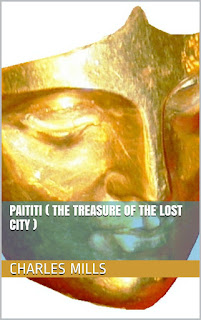When Spain
conquered the Inca Empire, between 1533-1553, she came into possession of an
almost endless supply of gold and silver.
One story from the conquest of
Cuzco’s Temple of the Sun, was the most revered shrine in the empire. Only three Spaniards ever saw the temple in its full glory. These men were sent by the Spanish commander, Francisco Pizzaro, to speed up the collection of the royal ransom. The temple had gardens in which everything…trees and grass and flowers, animals, birds, butterflies, cornstalks, snakes, lizards and snails were all made of hammered gold. The main room of the temple held the high altar, which was dedicated to the sun. The four walls of the room were hung with plaques of gold, from top to bottom, and the likeness of the sun topped the high altar. The likeness was made of a gold plaque twice as thick as the plaques that paneled the walls and was composed of a round face, surrounded by rays and flames. The whole thing was so immense that it occupied the entire back of the temple, from one wall to the other. The disc was positioned to catch the morning sun and throw its rays into the gold-lined temple, filling the room with radiant light.
On either side of this enormous golden sun were kept mummies of former Inca kings, which were so well preserved that they seemed alive. The mummies were seated on golden thrones and looked directly out at the visitor.
Five other rooms made up the temple complex. The first of these rooms was dedicated to the moon, the bride of the sun in Inca mythology. It was entirely paneled in silver and a likeness of the moon, with the face of a woman, decorated it in the same way that the sun decorated the larger building. The bodies of long dead queens were displayed in this temple just as those of the kings were kept in the other.
The room nearest to that of the moon was devoted to the stars. This room was hung with silver and the ceiling was dotted with stars. The next room was dedicated to lightning and thunder and was entirely covered with gold. The fourth room was devoted to the rainbow. It was entirely covered with gold and the rainbow was painted across the entire surface of one of the walls. The fifth room was reserved for the high priests.
The reigning
emperor’s private quarters were similarly gold studded. Outer and inner walls were sheathed in gold
and the Inca’s palace had a golden garden similar to that of the
The first three Spaniards
to see the temple did not remove the holiest religious symbol of the empire,
the golden disc of the sun, though they reported its existence. Subsequently the disc vanished, hidden before
the main part of the Spanish army arrived.
It has never been found. The
Spaniards conquered
One of the highlights of Peru’s capital is the
outstanding collection of Inca artifacts in the basement vault of the privately
owned Museo de Oro del Peru or Peruvian Gold Museum. As extensive as the gold collection is it’s
sobering to realize that these are merely crumbs.
Paititi (The Treasure of the Lost City)






No comments:
Post a Comment